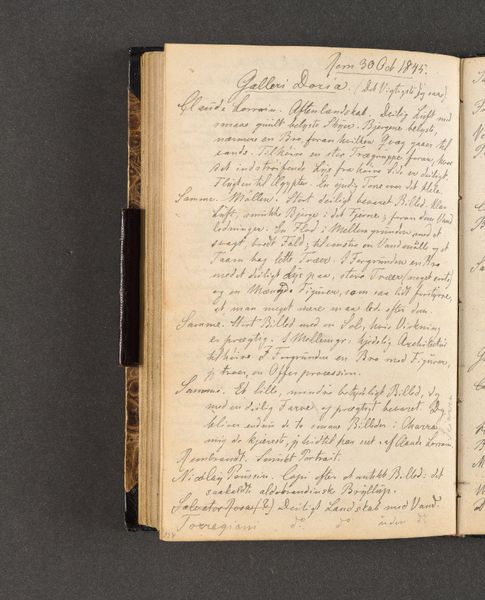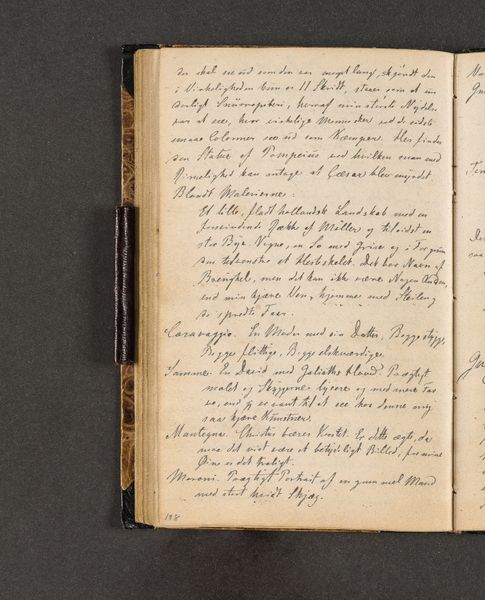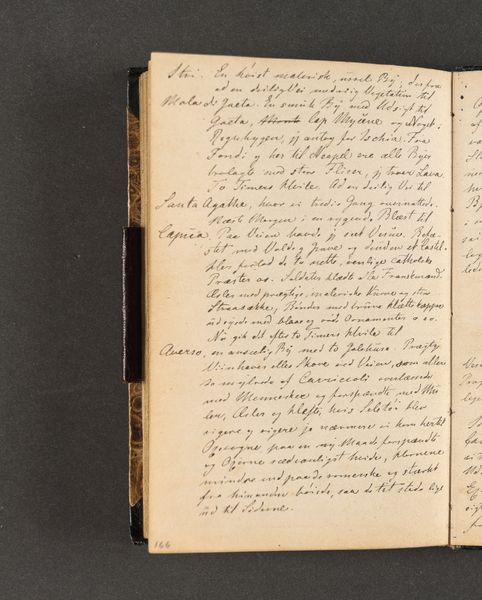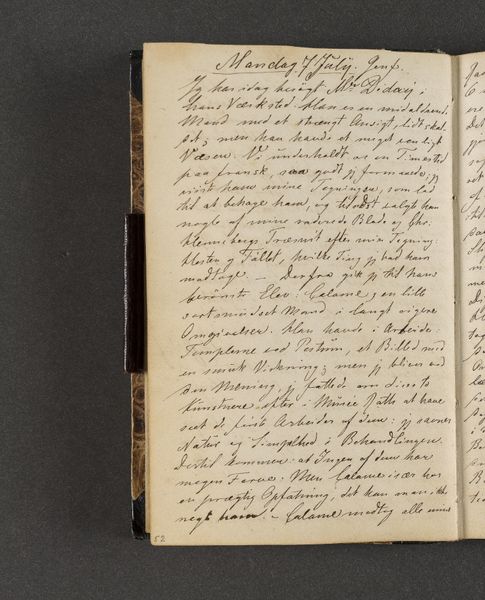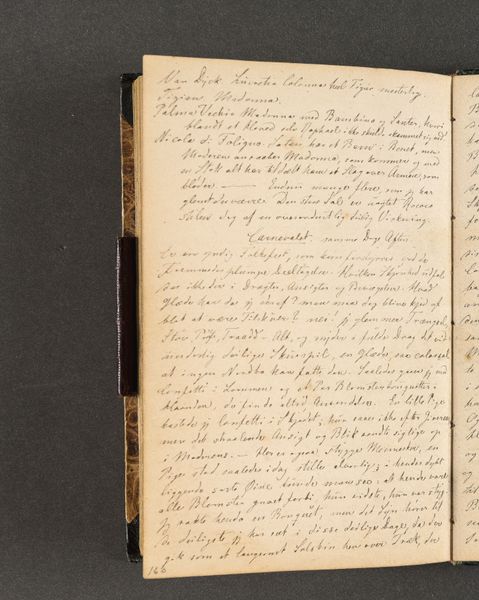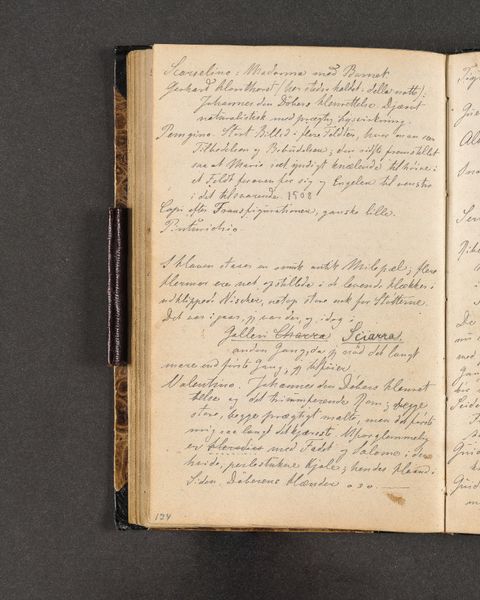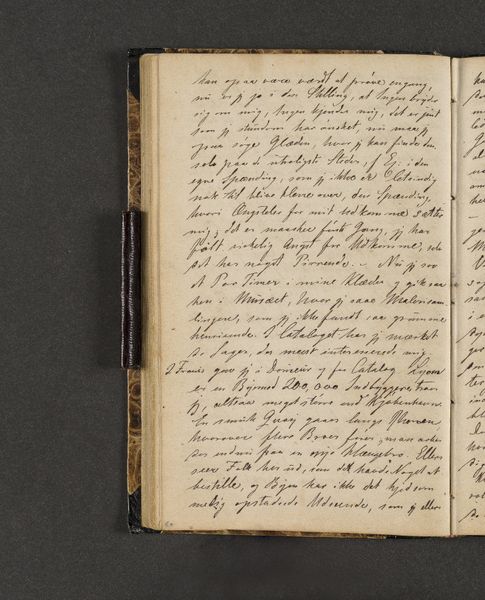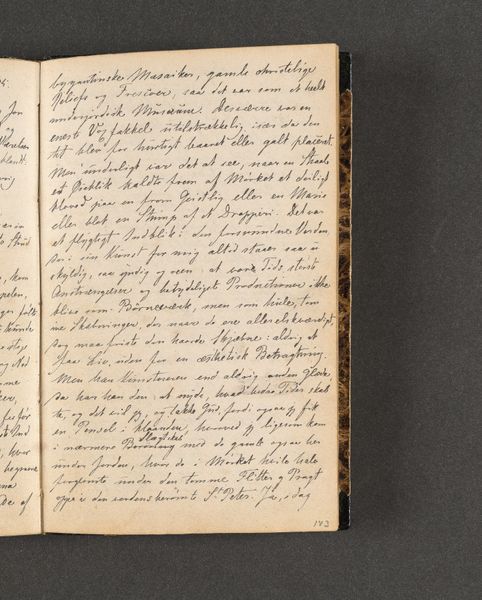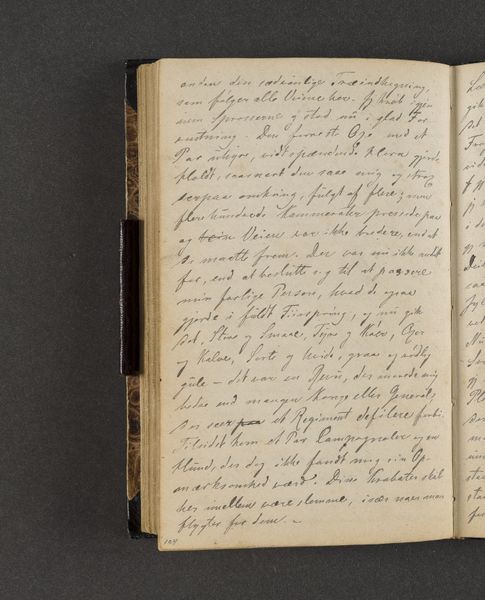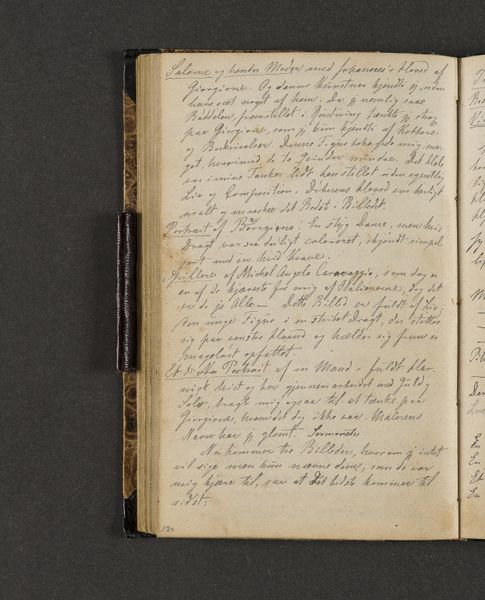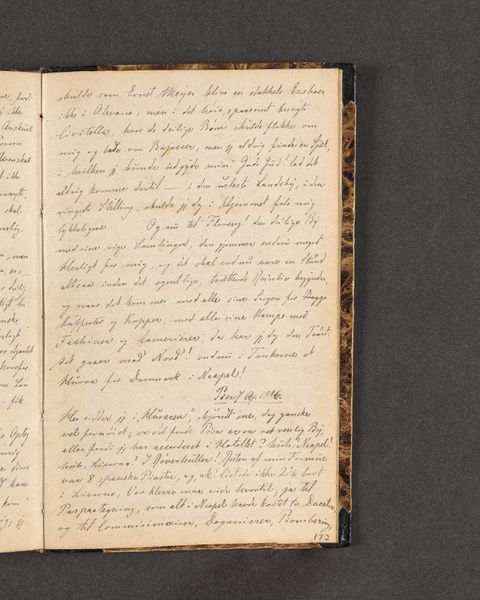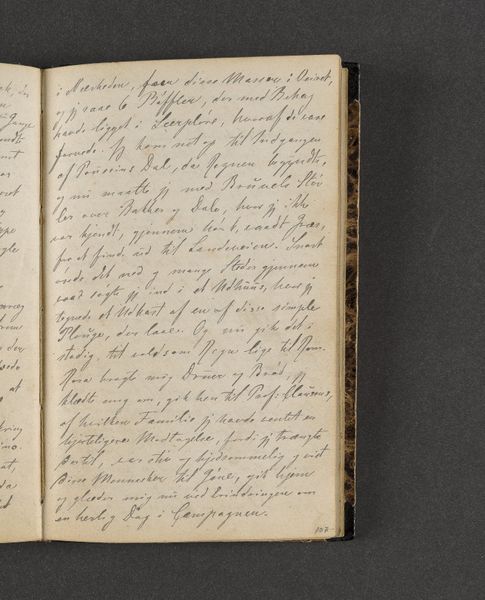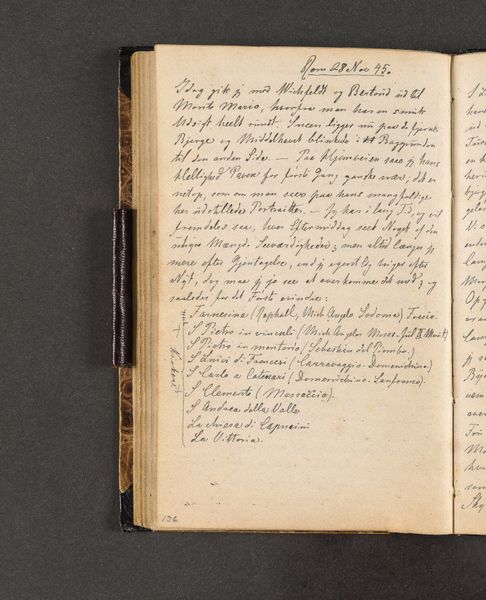
drawing, paper, ink, pen
#
drawing
#
paper
#
ink
#
pen
Dimensions: 161 mm (height) x 103 mm (width) x 11 mm (depth) (monteringsmaal)
Curator: Welcome. We’re standing before Johan Thomas Lundbye's "Rejsedagbog," created in 1845. It's an intimate, ink-on-paper drawing. Editor: The open notebook format immediately pulls me in. The handwritten script creates a strong textural impression across the composition, dense and consistent with few visual breaks. Curator: Indeed. It's from his travel journal. It holds a treasure trove of cultural information in plain prose - descriptions of various art galleries he toured and specific artworks that stood out to him in Rome, such as works by Caspar Poussin and Titian, among others. You can practically hear Lundbye's voice reflecting upon the art he views. Editor: It's interesting, though, that even this sort of written document is mediated by conscious choices – a specific kind of pen, carefully sized lines, an intentional commitment to particular observations over others. The structure, even within the apparently free flow, lends a powerful sense of curated vision. Curator: He uses those very observations as building blocks. The names themselves – Titian, Veronese, Murillo – represent whole traditions, schools, even worldviews. The handwriting, looping and consistent, ties him to a tradition of academic travel journals as well as a distinctly Danish Golden Age artistic identity. It becomes a sort of index. Editor: Agreed. The contrast between the regularity of the lines and the minute variations in pressure, weight, and texture creates an intimate mood. As though you can hear the scratching of his quill across the surface of the page. It certainly complicates ideas about simple access. Curator: Precisely. An almost tactile intimacy is revealed despite the physical distance and the formal constraints inherent to creating this. We become participants in his experiences and even glimpse a personal side through the works he admired. Editor: For me, reflecting on his mark-making heightens my appreciation for how art's impact is tied not just to cultural memory but its formal arrangements of structure and line, surface and symbol.
Comments
No comments
Be the first to comment and join the conversation on the ultimate creative platform.
